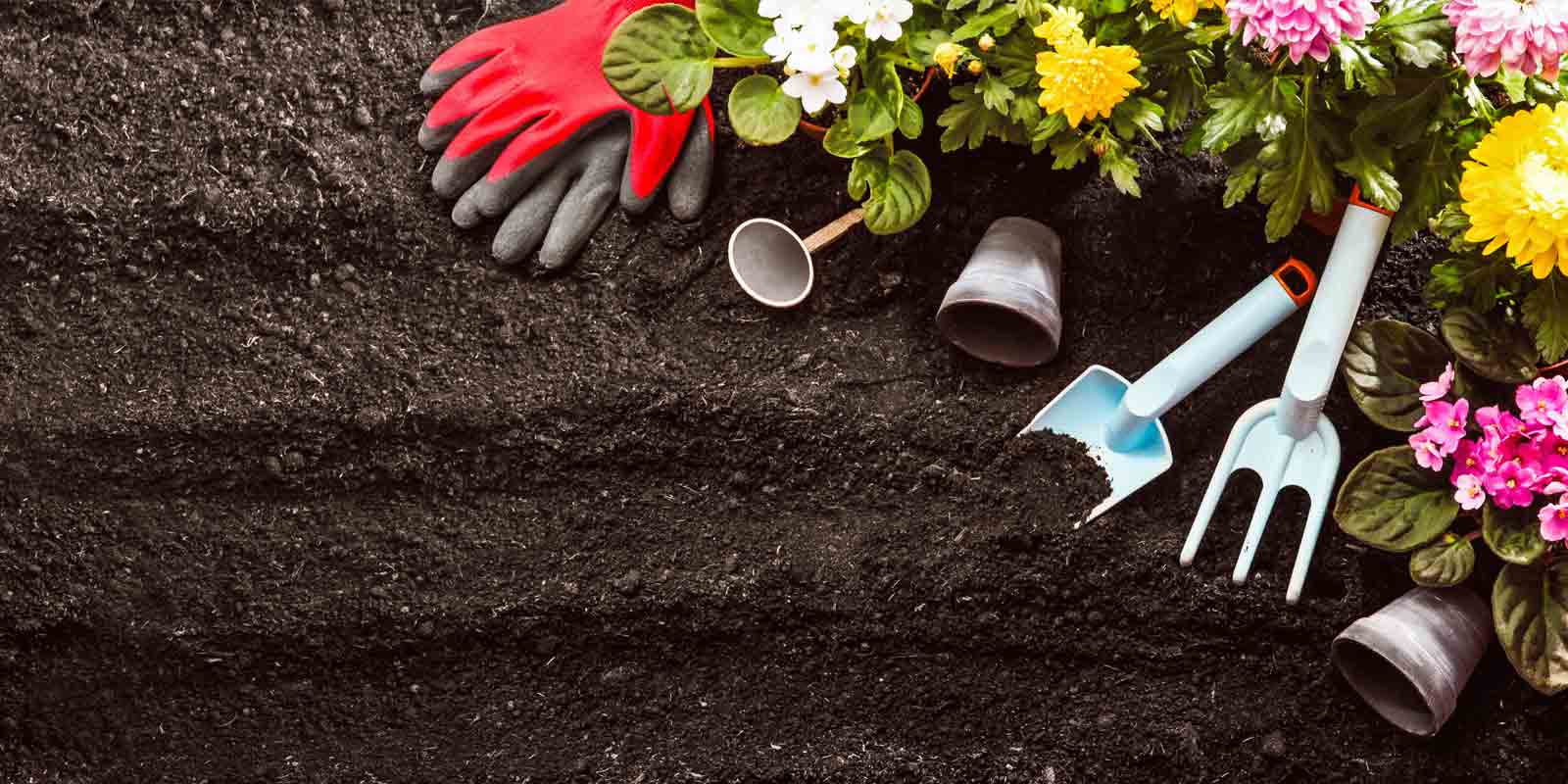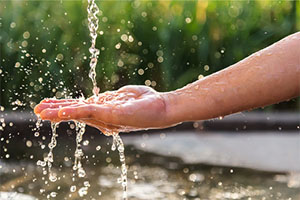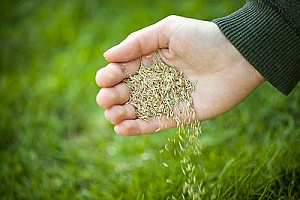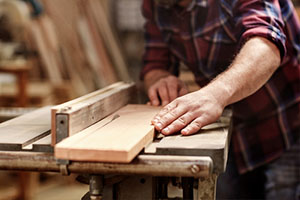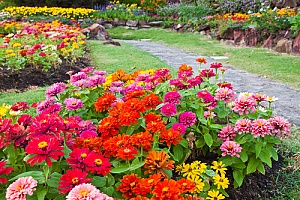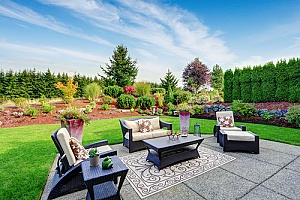 If you’re getting ready to go on a new garden venture, you need to prepare your soil to ideally house your plants. The best thing you can do in the soil preparation process is to reach the perfect mixture of sand, silt, and clay. Preferably there would be 40 percent sand, 40 percent silt, and 20 percent clay. Preparing healthy soil is as easy as test, analyze and enhance. With the soil preparation complete, it’s time to plant your seeds and make your garden grow.
If you’re getting ready to go on a new garden venture, you need to prepare your soil to ideally house your plants. The best thing you can do in the soil preparation process is to reach the perfect mixture of sand, silt, and clay. Preferably there would be 40 percent sand, 40 percent silt, and 20 percent clay. Preparing healthy soil is as easy as test, analyze and enhance. With the soil preparation complete, it’s time to plant your seeds and make your garden grow.
Soil Test
There are several tests used by experienced gardeners to tell whether the soil has a good composition. First you can compress it in your hand. When the soil fails to hold its shape and crumbles on its own, it likely has a high sand ratio. Poking the compressed ball with your finger and finding that it doesn’t easily fall apart suggests there is too much clay in the soil.
If you’re still not sure about the content of your soil, you can separate each ingredient by using this simple method. Put a cup or two of dirt into a jar of water. Shake the water up until the soil is suspended, then let it set until you see it separate into 3 separate layers. The top layer is clay, the next is silt, and on the bottom is sand. You should be able to judge the presence of each component within your dirt, and act accordingly.
Analysis
After you’ve analyzed the content of your soil, if you decide that it is low on a certain ingredient then you should definitely do something to fix it. If dealing with too much silt or sand, it’s best to add some peat moss or compost. If you’ve got too much clay, add a mixture of peat moss and sand. The peat moss, when moistens, helps for the new ingredient to infiltrate the mixture better. If you can’t seem to manage to attain a proper mixture, just head down to your local gardening store. When preparing healthy soil, you should be able to find some kind of product to aid you.
Water Content
The water content of the soil is another important thing to consider when preparing for your garden. If your garden is at the bottom of an incline, it is most likely going to absorb too much water and drown out the plants. If this is the case, you should probably elevate your garden a few inches (4 or 5) over the rest of the ground. This will allow for more drainage and less saturation.
Nutrients
Adding nutrients to your soil is also a vital part of the process of preparing your healthy soil, as most urban soils have little to no nutrients already in them naturally. One to two weeks prior to planting, you should add a good amount of fertilizer to your garden. Mix it in really well and let it sit for a while. Once you have done this, your soil will be completely ready for whatever seeds you may plant in it.
Plant Your Seeds
Once your seeds are planted, you still want to pay attention to the soil. The first few weeks, the seeds are desperately using up all the nutrients around them to sprout into a real plant. If they run out of food, how are they supposed to grow? About a week after planting, you should add the same amount of fertilizer that you added before. After this you should continue to use fertilizer, but not as often. If you add a tiny bit every couple of weeks, that should be plenty to keep your garden thriving.
Other Factors in Garden Creation
So now you’ve picked out what type of garden you will have, what the location will be, and what kind of fertilizer you need, now is the time to really get started in choosing your garden environment. First you’ll want to choose what your garden barriers will be. What will separate your garden from the rest of the world? Next you’ll want to choose the decorations and support for your plants. Often some kind of metal mesh is necessary to keep your plant standing up. You will also want to choose how much soil and fertilizer to buy, and how to arrange all the plants in your garden.
Garden Borders
Choosing a border is actually a fairly important step in getting your garden started. It might not actually affect the well-being of the plants, but having a garden is a fairly aesthetic ordeal for many people anyways. So usually you will want to choose between metal and wood. You can stack up boards around the perimeter of your garden, and give it a rather nice cabin look. If you’re looking for a more modern look, you can obtain some metal lining at your local home improvement store for rather cheap, and installation is medium difficulty.
Plant Support
Finding something nice-looking to support your plants can be a little bit more challenging. Sometimes a short metal pole can work well, but often for plants such as tomatoes you will need a wire mesh for it to pull itself up on. You can find these at any gardening store, usually pre-shaped in a sort of cone shape ideal for plants. The plant just grows up through it, and usually it will last until the plant is grown enough to support itself. After that you can take a pair of wire-cutters and just snip it free.
How Much Soil
Deciding how much soil to buy can be slightly easier. Look up information on your plants and find out the ideal soil depth. Then dig out that much from your garden, take the measurements, and find out the exact amount of cubic feet of soil that you will need. Go to the store and buy it, preferably adding on a few bags just so you can replenish the supply if it compresses or runs out. If you live in an area where the ground is rough, dry, and barren of nutrients, then you might even want to add a few inches of depth to the original recommendation. This just another simple step in preparing your healthy soil for your seeds.
Arrangements
Arranging the plants is rather important to the success of your garden. I’m not talking about some kind of feng-shui thing, but depending on your watering, some plants might hog all the water and leave the other plants high and dry. Some plants have longer roots than others, and are more aggressive in the collection of water. If you place one of these plants next to a plant with weaker, shorter roots, it will quickly hijack the water supply for itself, and choke out the other plant.
Basically, the entire process of preparing healthy soil care can be compressed into just a few steps. Make sure the makeup of the soil is satisfactory, make sure you have proper drainage in your garden, add fertilizer before and after planting, then add fertilizer regularly after that. Follow these simple steps, and you’ll have a plethora of healthy plants in no time. And if you need any more details on an individual step, just go to your local nursery and inquire there. Most of the employees will be more than happy to give you advice.
I hope I’ve led you to realize that preparing healthy soil and plant placement is a step by step process. There are many other factors that might not seem significant, but spending time considering your options can change the outcome of your garden. So if you’re working on building a garden, you can use and reference (the library, the internet, and magazines). Look into some of the factors I’ve mentioned. Improve your results when preparing healthy soil and make your garden grow.
Maintaining Healthy Soil for Long-Term Garden Success
Consistent soil maintenance is key to ensuring the long-term success of your garden. Regularly testing your soil’s composition and nutrient levels allows you to make necessary adjustments, such as adding compost or fertilizers, to keep it fertile and well-balanced. Proper soil preparation and maintenance not only improve plant health but also enhance your garden’s overall productivity. By focusing on preparing healthy soil, you create an environment where your plants can thrive year after year, ensuring a vibrant and flourishing garden.
Summary

Dirt Connections was started with one goal in mind: providing quality residential and commercial construction services to clients on time and on budget. Reach out for more information on how we can support your next project.
For your convenience our estimates are free and by appointment. Call 703-940-9949 for a free estimate today!

